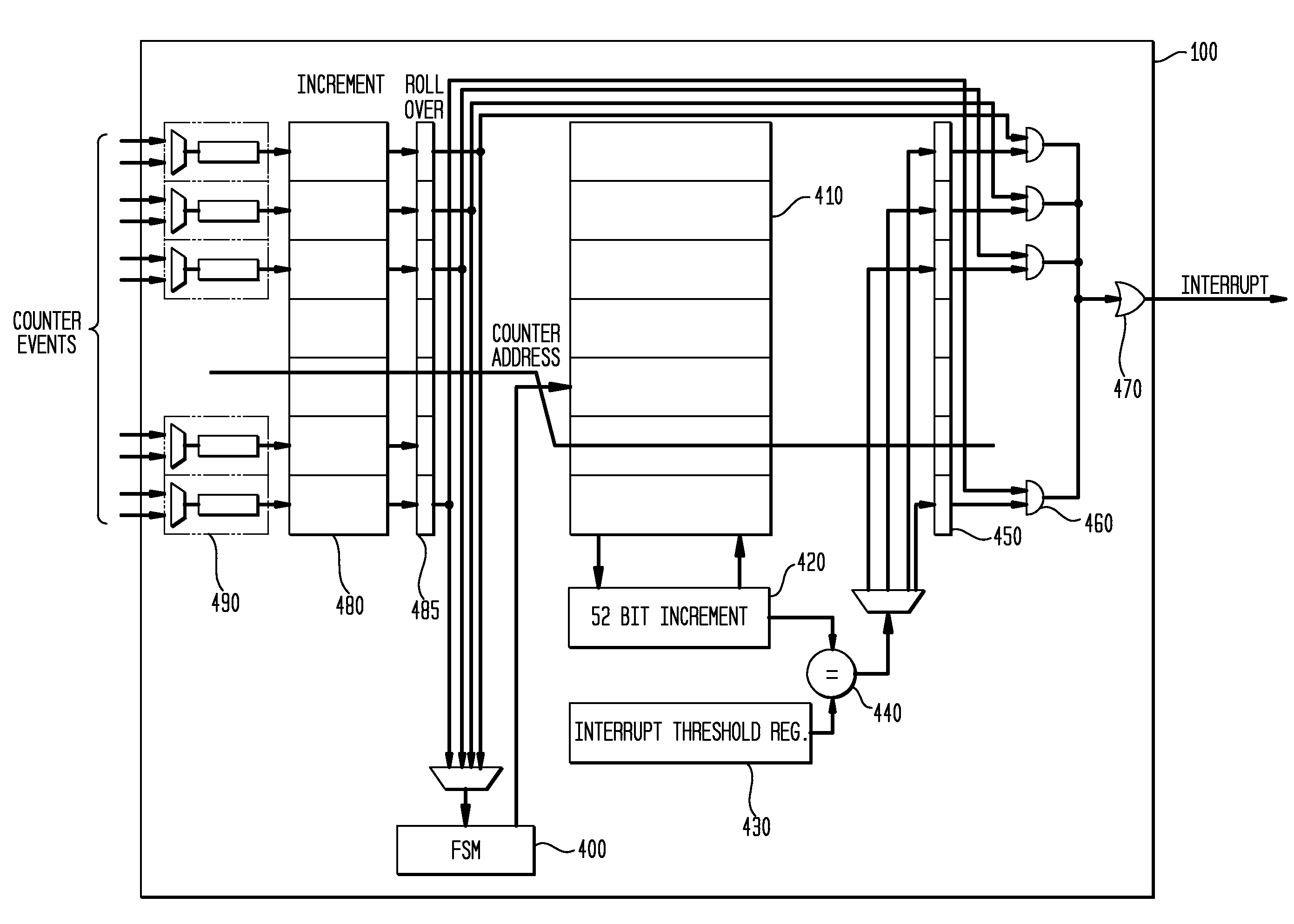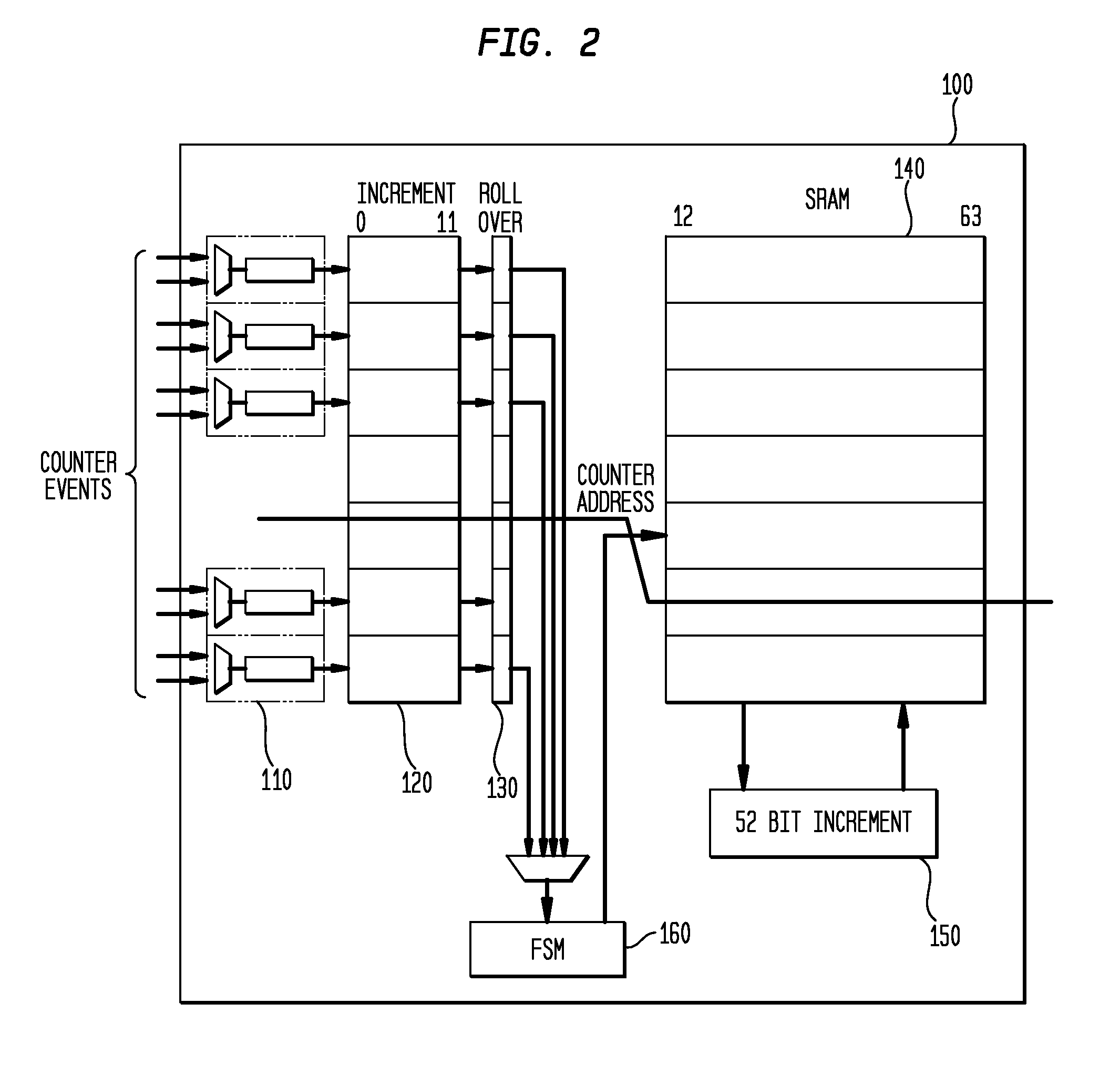Method and apparatus for updating wide storage array over a narrow bus
a technology of a wide storage array and a bus, applied in the field of computer systems, can solve the problems of inability to count more than n events at the same time, inability to update the data storage array, and inability to meet the needs of large-scale data storage, so as to reduce the area required, and reduce the size of the area.
- Summary
- Abstract
- Description
- Claims
- Application Information
AI Technical Summary
Benefits of technology
Problems solved by technology
Method used
Image
Examples
Embodiment Construction
[0060]Referring now to drawings, and more particularly to FIG. 2, there is depicted a preferred embodiment of the invention. The performance counter unit 100 contains N of counters. The N counter events to monitor are selected from set of M events selected by the set of N multiplexers 110. The selected performance events are counted in the counter block 120, which implements N counters which are n width representing n least significant bits of a counter. The counters in the block 120 are implemented using discrete registers. In the preferred embodiment, the block 120 implements only lowest 12 bits of 64-bit counters, but it would be obvious to skilled artisans that any number of lower bits can be counted in the discrete register logic block.
[0061]When a counter from the counter block 120 reaches its maximum, its value rolls over to zero, and the corresponding bit in the “roll over bit” block 130 is set, and the counter continues to track performance events.
[0062]The K−n most signifi...
PUM
 Login to View More
Login to View More Abstract
Description
Claims
Application Information
 Login to View More
Login to View More - R&D
- Intellectual Property
- Life Sciences
- Materials
- Tech Scout
- Unparalleled Data Quality
- Higher Quality Content
- 60% Fewer Hallucinations
Browse by: Latest US Patents, China's latest patents, Technical Efficacy Thesaurus, Application Domain, Technology Topic, Popular Technical Reports.
© 2025 PatSnap. All rights reserved.Legal|Privacy policy|Modern Slavery Act Transparency Statement|Sitemap|About US| Contact US: help@patsnap.com



